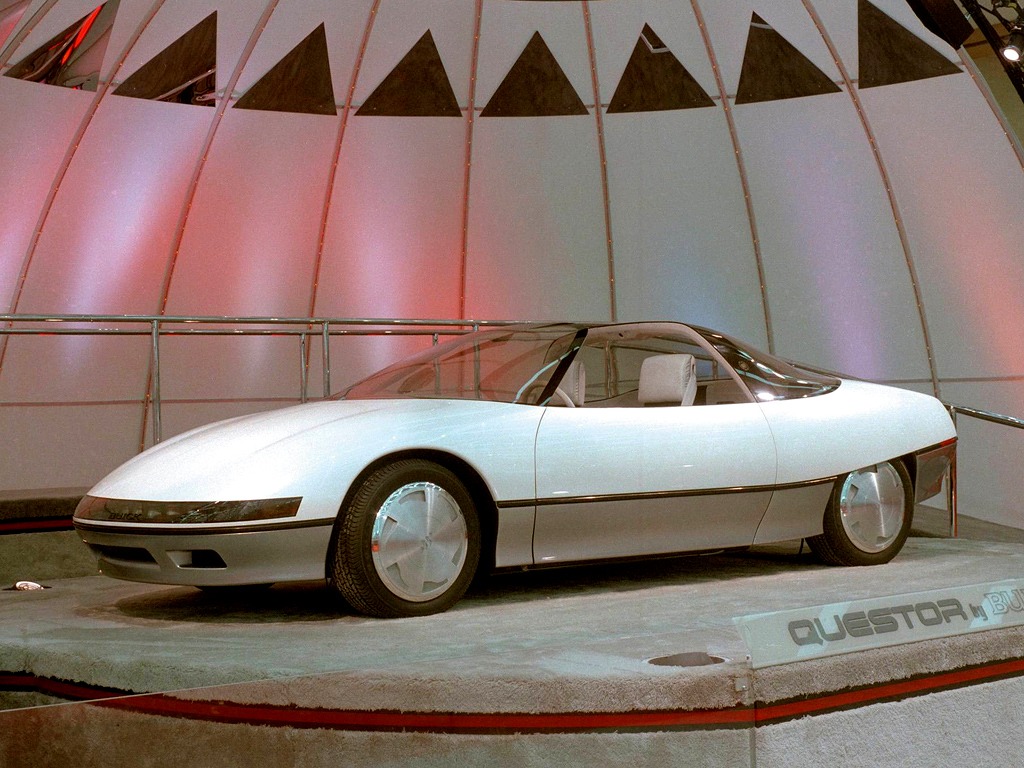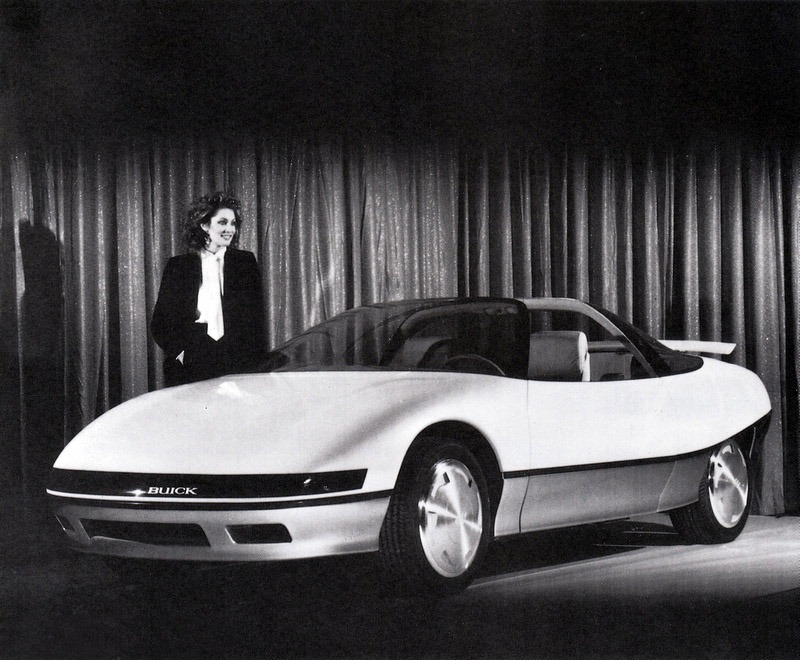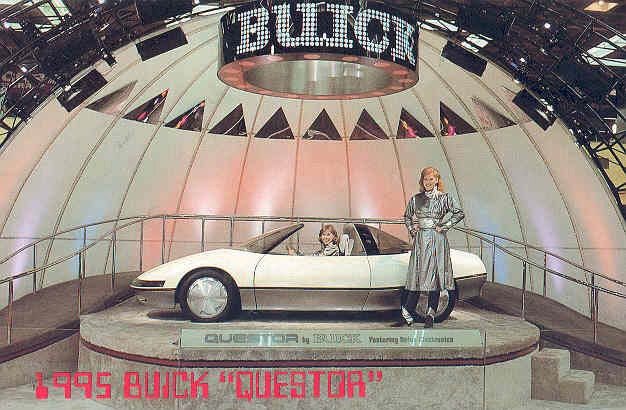General Motors had taken over 5 months alone to complete the plans for the Questor’s computer systems. Buick is General Motors‘ electronic study division, and had packed all the latest technology into a single automobile.
Though the instrument panel had no instruments, the monitor near the steering wheel provided a clear wide-angle view of the rear. There were no exterior door handles or side minors. Most of the gauges and controls were placed on either the steering wheel or the central transmission tunnel dividing the two front seats.
A laser key system operated on an invisible light beam. By pressing a switch contained in a hand-held unit raised the car about six inches for easier entry. The laser key opened the door and turned on all on-board systems – including the pop-up systems sentinel – and automatically adjusted the seat, pedals, steering column, and entertainment and interior systems to the personal settings of the driver. When the doors were closed, the car automatically lowered to driving position. The laser key replaced the standard ignition key. Pressing it again would activate all the accessories: the system sentinel dropped out of sight and the rear-view television monitor, navigation center, and touch command center would activate.
When the engine was running, the instrument panel rose from the base of the windshield. Since this panel was transparent, it did not tamper with the driver’s sight of the road. There was also a voice-activated radiotelephone. When the Questor reached 25 mph, the front end nosed down for better fuel economy and aerodynamics. The rear end rose up three inched when cruising at highway speeds. In total, there were more than fourteen computers that the Questor ran on; all of which are fully-functional.
Source: Concept Car Central
















